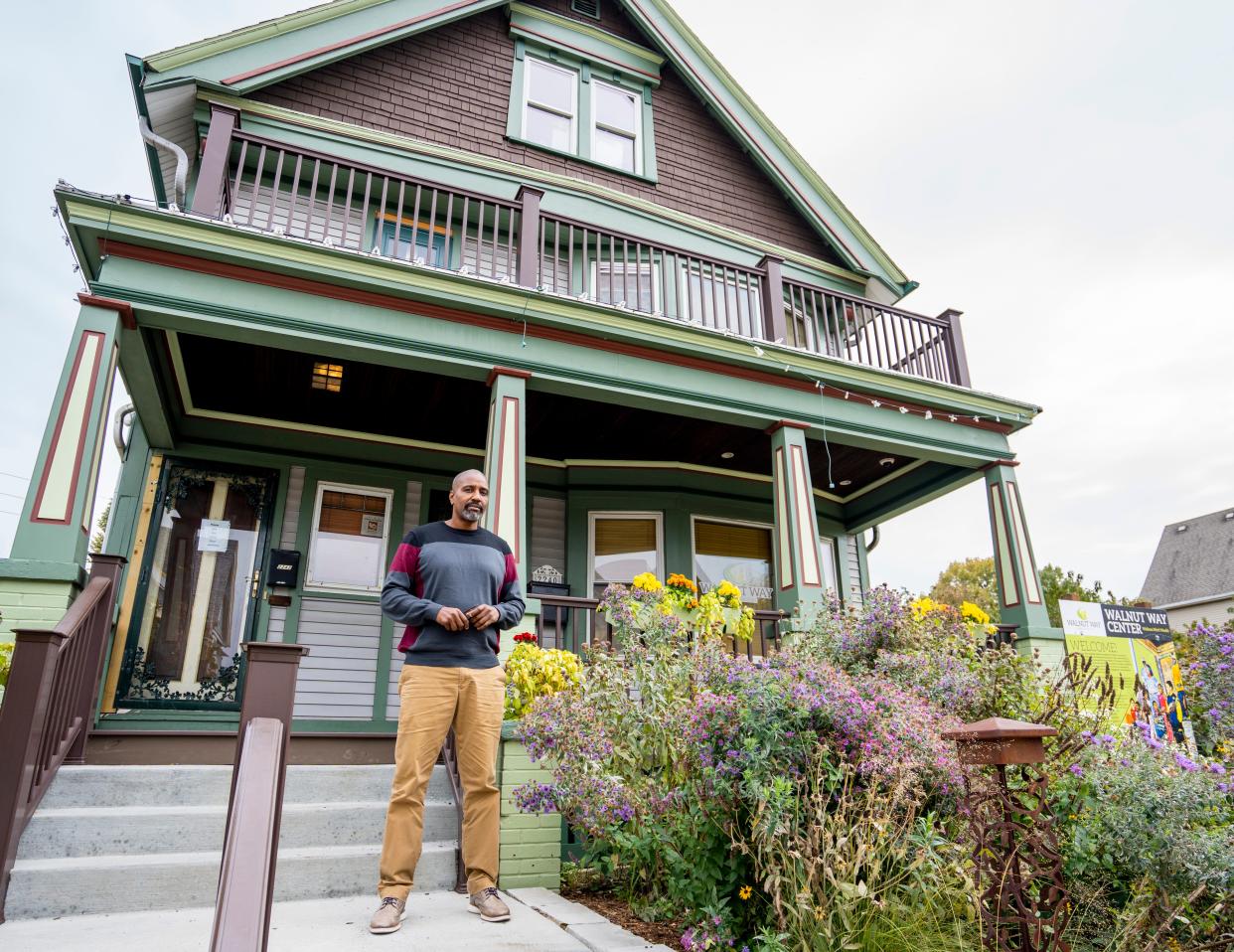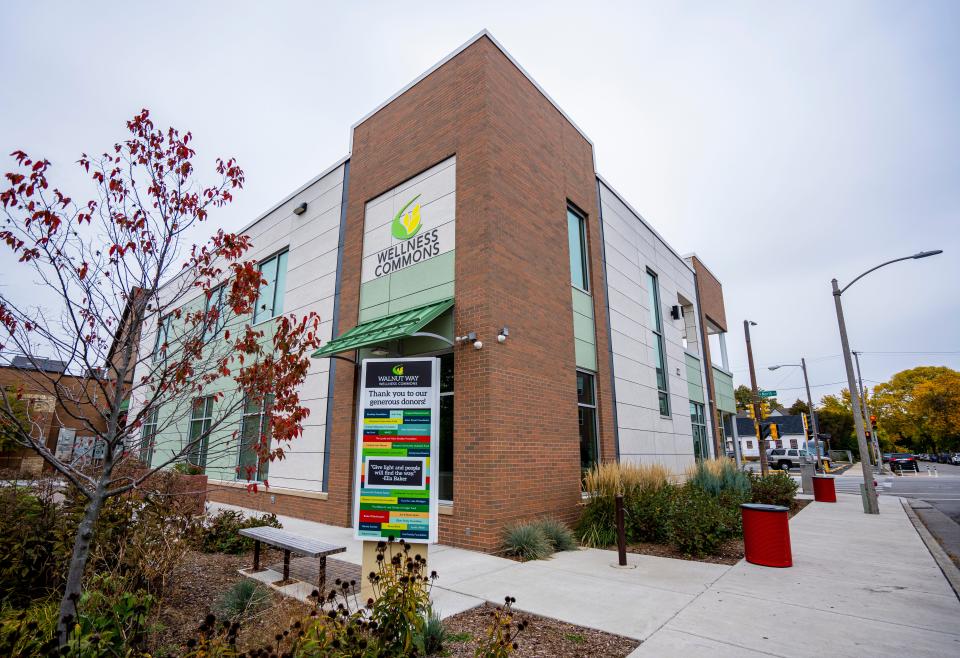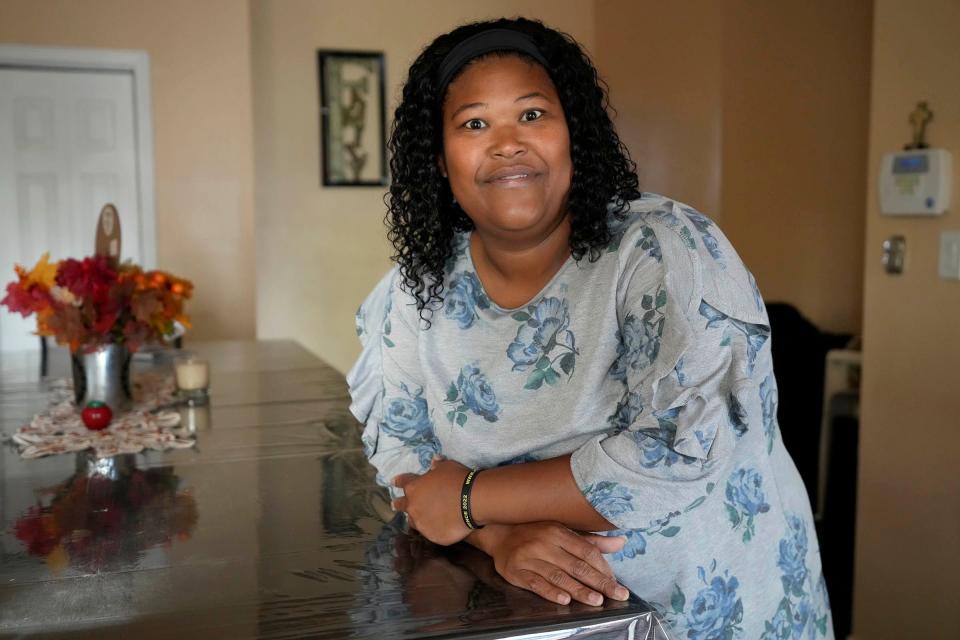How a Milwaukee neighborhood organization is trying to change the debate on electric, gas rates in southeast Wisconsin

A Milwaukee neighborhood organization has become a wild card in state regulators' consideration of We Energies' request for a rate increase.
Walnut Way Conservation Corp., which represents the Lindsay Heights neighborhood, took the rare step of signing up as an intervenor in the rate case, inserting neighborhood residents into the Public Service Commission of Wisconsin's review of the rate request.
That process has historically played out as a give-and-take between the utility, business and environmental groups, and the Citizens Utility Board, the advocacy organization that has been the primary voice of residential and small-business ratepayers.
Walnut Way's decision to become involved in the rate case is a reflection of its 20-year history of working to improve and support the primarily Black neighborhood and promote social and economic justice and equity, said Executive Director Antonio Butts.
We Energies is seeking rate hikes that would increase an average residential customer's annual electric bill $175 and add about $84 to gas bills. That's the base rate, and rising fuel costs are expected to add another 10% to 20% to bills this winter, the company said. The utility says the increases are largely needed to help pay for the transition to renewable energy.
Group seeks a broader discussion
Butts said a rate increase couldn't come at a worse time for families that already are struggling with inflation.

But Walnut Way is not exclusively focused on fighting that rate hike. Instead, the organization wants to change the nature of the debate, focusing it on its unequal impact on the residents in Lindsey Heights and other low-income neighborhoods where many families, elderly residents and other households of color have historically struggled to pay utility bills and find themselves caught in an annual cycle of disconnection for non-payment and reconnection.
"Based on our current circumstances globally and nationally, in this economic environment, this is not a time to increase rates without an intentional examination of the inequities inherent in the formula," Butts said.
In filings with the Public Service Commission, Walnut Way argues that rates should be set in a way that don't overly burden the utility's low-income customers, those who pay the largest percentage of their income for gas and electric service.
Walnut Way's proposal, on its face, is simple: electric rates should be based on ability to pay, with a guarantee that no household will pay more than 6% of its income for gas and electric service.
For customers who do fall behind, Walnut Way wants We Energies to create a better, more accessible system for helping them catch up, avoid disconnection and its additional costs, and not fall behind again.
A new approach to rate-setting sought
By taking those positions and calling for other ways to make utility billing more equitable and affordable, Walnut Way is asking the Public Service Commission and We Energies to deeply reconsider basic elements of a rate-setting process that the utility hopes to have completed by the end of the year.
Yet Wisconsin has never taken an income-based approach to rate setting, and the utility argues that the time frame of the current rate case is too compressed to consider it now.
Last week, We Energies reached a partial settlement with CUB and several other parties, including a group representing its largest industrial users, and two major retailers.
The proposed settlement addresses some issues but does not include agreement on the final gas and electric rates. It includes a reduction in what the utility can charge customers for decommissioning coal plants and continuation of a pilot assistance program that provides for low-income customers.
And it includes a commitment for We Energies and Wisconsin Public Service Corp., which serves northeastern Wisconsin, to begin discussion of a pilot program to test a "percentage of income payment" system with the aim of seeking Public Service Commission approval by the end of 2023.
That's a win of sorts for Walnut Way, but the organization did not sign on to the proposed settlement.
In an Oct. 12 filing urging the commission to reject the revised rate proposal, Walnut Way's lawyers argued it does not address Walnut Way's issues or require any additional funding or commitment to affordable energy programs.
The filing asks the commission to endorse implementation of an affordability rate and the principle that gas and electric bills should not exceed 6% of household income for income-qualified customers.
It also asks commissioners to agree to moderate discussions with We Energies, and to provide a dedicated funding source for Walnut Way and other parties involved in those discussions. The goal would be to have a program ready for consideration in the next rate case.
Butts lamented the incremental approach to utility price reform, and the utility's limited engagement with Walnut Way, which included just one half-hour meeting prior to the settlement agreement.
"When you think about this, this is a reflection of really what's going on in society," Butts said. "Here we are, again, isolated economically. So, you have all of these intervenors who have now come closer together, because what we want is far and away from the aspirations of the impacted community."
Energy burden not shared equally
Shamikka Smith, a single mother of three teenage children, bought her house on North 17th Street in Lindsay Heights in November.
A child care provider at Marquette University Child Care Center, the purchase of the house was a financial stretch for Smith. She lives on a tight, carefully controlled household budget, and has already absorbed a double-digit increase that We Energies made to her and others' payment plans as fuel costs increased this summer. Any further increases in expenses could require hard decisions about prioritizing bills or forgoing expenses, she said.

"I just got my own home and was living good, but just thinking about this rate increase is going to make me fear about this bill," she said.
Smith doesn't consider herself "low, low income." And while she worries about her own situation, she also is concerned about other residents of the neighborhood, which runs from West Locust Street to Walnut Street between North Sixth and 20th streets.
Those concerns prompted her to testify at a late September hearing on We Energies' rate proposal.
"Everyone is saying they want poor people to raise up, or families to raise up," she told the commission. "It's almost like we can't raise up when more things are coming to push us down."
Lindsay Heights is a place where older housing frequently translates to low energy efficiency and high bills. Almost 40% of households have incomes below the poverty level, according to U.S. Census Bureau data.
A study of low-income Milwaukee census tracts by the Sierra Club found that the least well-off residents in those predominantly Black and Hispanic tracts spend as much as 19% of their income on utility bills. The average for the 57 tracts was 12.8%.
The study also found that residents of low-income, high-burden neighborhoods face higher utility costs, on average paying $310 more per year than residents of more affluent areas with more energy-efficient housing. The average annual utility cost in those neighborhoods was $2,240 while household income averaged $32,000, the study said. That compares to annual costs of $1,930 in less burdened neighborhoods, where annual income averaged $80,000.
Affordable housing is typically defined as a dwelling with utilities that costs no more than 30% of household income. When utility costs eat up 10% of that income, it leaves limited means for other expenses, Butts said.
"The goal is to develop a formula co-created with the utility that prevents ratepayers from paying more than 6% of their income," Butts said.
Not your typical intervenor
It's not that rate cases haven't taken into consideration ability to pay. In fact, that's a primary concern of organizations like CUB, which in the last rate case pushed for the Low Income Forgiveness Tool, which was launched last year.
What's different is Walnut Way's focus on the utility's impact on a narrow group of ratepayers, the primarily Black residents of specific low-income neighborhoods, though Walnut Way's ratepayer advocacy extends to other low-income populations.
Tom Content, CUB's executive director, said Walnut Way is bringing a new perspective that CUB doesn't directly address because it works on behalf of all residential and small-business ratepayers.
"We know we have pockets of difficult energy burden in urban and rural areas across the state, but Walnut Way is the first organization that's really stepped up to get involved in this way," Content said.
In fact, the unusual nature of Walnut Way's intervention was evident at an August hearing at which the Public Service Commission agreed to provide nearly $70,000 for the organization to hire lawyers and experts to assist it in challenging We Energies.
Commissioner Ellen Nowak argued against funding for Walnut Way. The organization has adequate assets to pay its own costs and the application raised points that weren't traditionally part of rate case deliberation, and the commission "never set rates based on income or Zip codes," she said.
Commissioners Rebecca Cameron Valcq and Tyler Huebner argued that Walnut Way's request was appropriate and that the fund was created to put intervenors on comparable legal footing with the utility. And, each said, Walnut Way would bring a new perspective and group of stakeholders to the deliberations.
"I think hearing what they have to say about rates and about programs would be instructive to the commission and to the applicant and the other intervenors," Huebner said.
Win or lose, the effort continues
Much of what Walnut Way is looking for is unlikely to happen by the time We Energies' rates are finalized later this year. That applies not just to the pilot program for an ability-to-pay rate structure but also its associated demands that the utility introduce energy efficiency and weatherization programs targeted to low-income customers and ensure that urban communities share in the benefits of the transition to renewable energy,
We Energies has said in testimony that it's open to "informal" discussions with Walnut Way, but much of what the organization is looking for can't or shouldn't be woven into the current case.
We Energies spokesman Brendan Conway said the company "engaged with Walnut Way like we did all the intervenors during the process and will continue to."
"We're always willing to engage with community groups on this and other issues," he said.
Rate cases usually cover two years. In this case, the Public Service Commission is asked to approve rates for 2023 only, and to keep the case open for 2024.
That allows for ongoing discussion, although, Content said, the pilot ability-to-pay rate program would be considered separately. Those discussions, he hopes, will include not just CUB, but also Walnut Way and other groups.
"We hope and expect that Walnut Way would be at the table and part of the dialogue that would follow approval of the settlement," he said.
Butts said Walnut Way is taking the long view. The important thing, he said, is to ensure the organization has a voice in the issue of energy affordability.
"The work ahead is to continue to build a relationship with the Public Service Commission in a way that leads us towards solutions around the inability to pay and energy affordability, and also to address the cost of participation," he said.
"Because these decisions have such long-range impact it is critical thatthe impacted communities be a part of the conversation."
Contact Karl Ebert at kebert@gannett.com. Follow him on Twitter at @karlwebert.
If you go:
Public hearings on We Energies' proposed rate increase
Nov. 3, 2 and 6 p.m.
Washington Park Senior Center, 4420 W. Vliet St.
THANK YOU: Subscribers' support makes this work possible. Help us share the knowledge by buying a gift subscription.
DOWNLOAD THE APP: Get the latest news, sports and more
This article originally appeared on Milwaukee Journal Sentinel: Community group pushes back on We Energy's proposed rate increases

